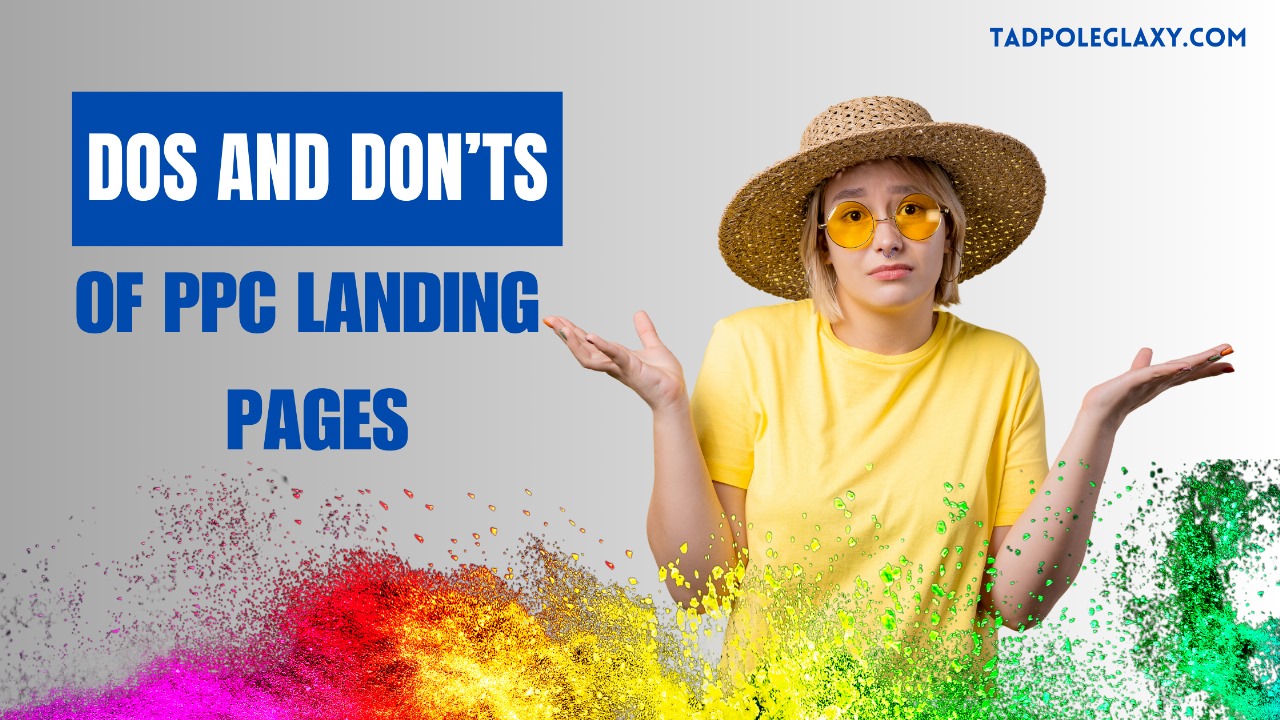Comprehensive Guide on the Dos and Don’ts of PPC Landing Pages
Introduction Optimizing PPC landing pages is crucial for enhancing your PPC conversion rate optimization. This guide covers essential landing page best practices and common pitfalls to avoid.
Effective Landing Page with SEO Design for PPC Campaigns

- Responsive Design: Adapt to all device types for consistent functionality.
- Speed Optimization: Enhance loading times to improve user engagement and decrease bounce rates.
- Mobile Optimization: Tailor design for mobile users to ensure ease of navigation and interaction.
Effective landing page design is crucial for the success of PPC campaigns. A responsive design is essential, as it ensures that the page performs well across different devices, from desktops to smartphones.
This is particularly important given the increasing use of mobile devices for web browsing. Additionally, speed optimization plays a vital role; faster page load times are linked to lower bounce rates and higher user engagement, which are critical metrics for the success of any PPC campaign.
Optimizing for mobile is another key strategy, considering that a significant portion of web traffic comes from mobile users.
Simplified navigation, quick loading elements, and touch-friendly interfaces help in maintaining user interest and facilitate smoother interactions on smaller screens.
Implementing these design tips can significantly enhance the effectiveness of a PPC landing page, making it a powerful tool for converting visitors into customers.
2. Specific Elements
- Call to Action (CTA): Design clear and compelling CTAs that guide users towards conversion.
- Headlines: Create engaging and relevant headlines that capture attention and interest.
- Trust Indicators: Integrate elements like testimonials and certifications to build credibility and trust.
The specific elements of a PPC landing page, such as Call to Action (CTA), headlines, and trust indicators, play pivotal roles in its effectiveness.
A well-crafted CTA not only catches the eye but also clearly communicates what the visitor should do next, significantly impacting conversion rates.
Headlines must immediately engage the visitor, conveying the core message succinctly and compellingly to retain their interest.
Trust indicators, such as customer testimonials, security badges, and endorsements, enhance credibility and reassure potential customers of the legitimacy and value of the offer.
These elements must be strategically placed and designed to work harmoniously to guide the visitor through the landing page towards making a conversion.
Note: Remember to keep the content focused on these specific elements to ensure clarity and directness in the message.
3. Dos and Don’ts
- Do: Keep your content focused and concise. Use bullet points or short paragraphs to communicate benefits effectively.
- Don’t: Avoid cluttering the page with excessive links or unrelated information which can distract from the main conversion goal.
For PPC landing pages, maintaining a clear and concise presentation is crucial.
Focused content, presented in bullet points or brief paragraphs, efficiently communicates the benefits to the visitor, aiding in quick decision-making.
On the other hand, it’s important to avoid the inclusion of excessive links or irrelevant details that could divert attention away from the primary objectives of the page, such as driving conversions.
Balancing informative and straightforward content enhances the user experience and supports the conversion process.
Through consistent application of these dos and don’ts, you can ensure that your landing pages serve their intended purpose efficiently, leading to better performance in your PPC campaigns.
4. Keyword Strategy
- Optimize for targeted, high-intent keywords.
- Balance broad and long-tail keywords to capture diverse user queries.
Keyword Optimization
Effective keyword strategy is crucial for PPC landing pages. It involves identifying and incorporating both broad and long-tail keywords that potential customers are likely to use when searching for services or products similar to yours.
This strategic placement helps in enhancing the relevance of the page, which can improve ad quality scores and lower cost per click (CPC).
By refining your keyword strategy, you ensure that your PPC landing pages are not only relevant but also competitively positioned in search results.
This involves analyzing search trends, understanding user intent, and continuously adjusting your keywords to align with current demands.
Such dynamic optimization leads to better targeting, more qualified traffic, and, ultimately, higher conversion rates.
This approach should be a cornerstone of your PPC campaigns, ensuring each landing page is tailored to the audience it intends to capture.
5. Avoiding Common Mistakes:
- Recognize and rectify common PPC pitfalls.
- Enhance landing page performance by addressing frequent errors.
Common Pitfalls
A crucial aspect of PPC landing page optimization is recognizing and avoiding common mistakes that can undermine your efforts.
Key errors include neglecting mobile optimization, overusing jargon that confuses the visitor, and failing to align the landing page content with the ad copy.
Such mistakes can lead to poor user experiences and lower conversion rates.
By proactively addressing these common errors, you can significantly improve the effectiveness of your PPC landing pages.
Ensuring that your pages are mobile-friendly, using clear and straightforward language, and maintaining consistency between your ads and landing page content are all essential practices.
This approach not only enhances user satisfaction but also boosts your campaign’s performance by making your landing pages more intuitive and aligned with user expectations.
Over time, this focus on avoiding typical pitfalls will lead to more successful PPC outcomes and a better return on investment.
Conclusion
Successfully optimizing PPC landing pages is essential for enhancing your digital marketing efforts.
By incorporating targeted keyword strategies, refining design elements, and avoiding common pitfalls, you can create landing pages that not only attract but effectively convert visitors.
Remember to keep your content focused, leverage powerful CTAs, and maintain alignment with your ad campaigns.
Consistently applying these best practices will ensure your landing pages are both engaging and effective, ultimately leading to improved conversion rates and a stronger return on your PPC investments.


